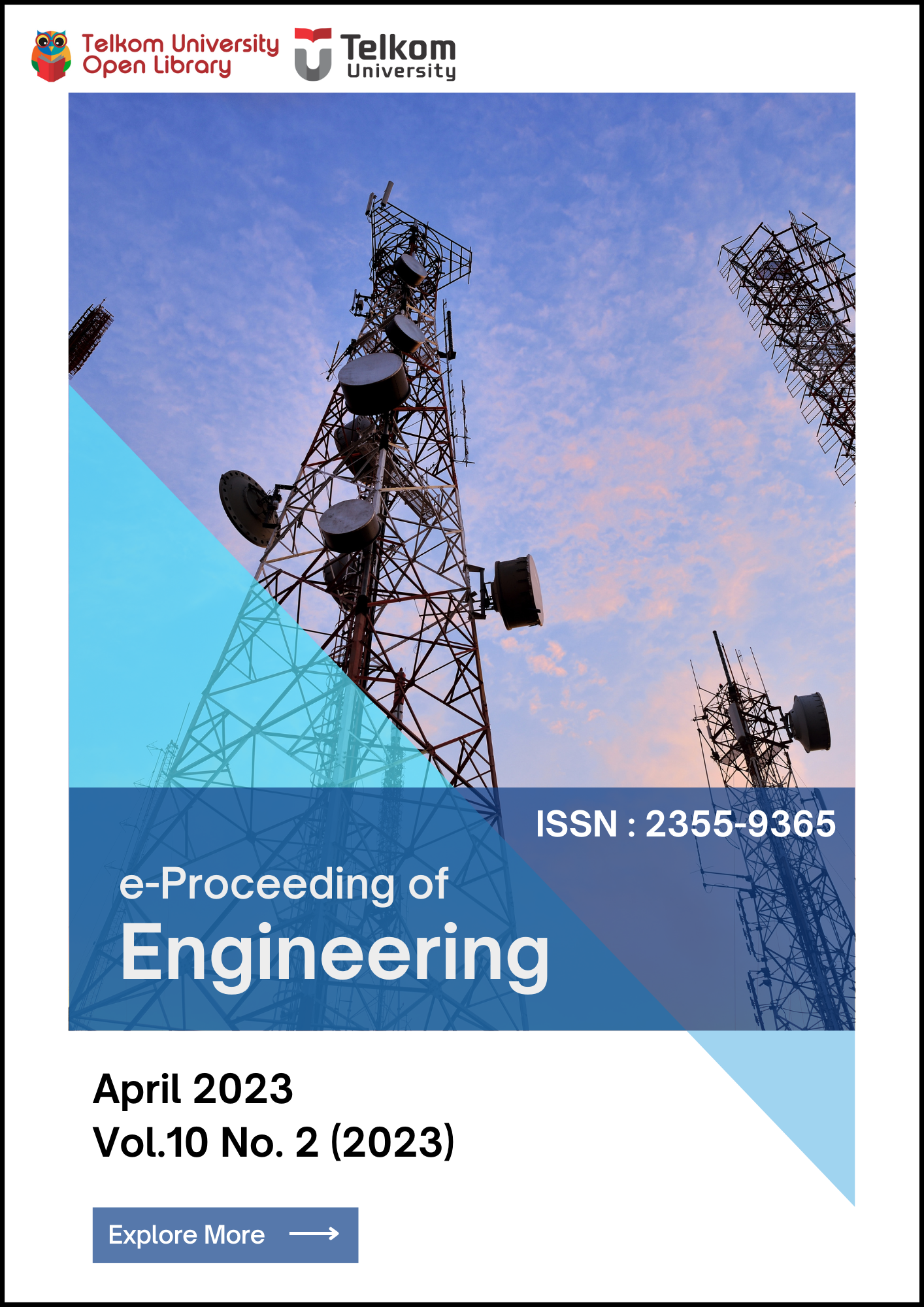Analisis Sentimen Kategori Aspek Pada Ulasan Produk Menggunakan Metode KNN Dengan Seleksi Fitur Mutual Information
Abstract
Abstrak-Analisis sentimen adalah bidang yang cukup populer untuk menganalisis opini, sikap, dan emosi terhadap suatu subjek dari banyak orang. Dalam hal ini teks ulasan menjadi alat untuk menilai, menimbang, dan mengkritik sebuah produk yang diulas. Produk adalah suatu hal yang dapat memuaskan seorang konsumen dalam bentuk yang beragam seperti barang, jasa, dan sebagainya. Pada penelitian ini dilakukan sebuah implementasi sebuah klasifikasi pada ulasan produk kecantikan dari situs Female Daily dengan menggunakan metode k-Nearest Neighbor (kNN). Metode kNN merupakan metode yang umum digunakan untuk klasifikasi. Lalu menggunakan Mutual Information (MI) sebagai metode seleksi fiturnya. Pada penelitian ini dihasilkan nilai akurasi 91,59% pada aspek price, 90,33% pada aspek packaging, 50,05% pada aspek product, dan 85,89% pada aspek aroma.
Kata kunci-k-Nearest Neighbour, Ulasan Produk, Ulasan, Produk, Mutual Information, Analisis sentimen.
References
Na, J. C., Thet, T. T., & Khoo, C. S. (2010). Comparing sentimen expression in movie reviews from four online genres. Online Information Review.
Daeli, N. O. F., & Adiwijaya, A. (2020). Sentimen analysis on movie reviews using Information gain and K-nearest neighbor. Journal of Data Science and Its Applications, 3(1), 1-7.
Kumar, Ajitesh. 2021. Machine Learning – Feature Selection vs Feature Extraction. [Online] Availabel at: https://vitalflux.com/machine-learning-feature-selection-feature
Macedo, F., Oliveira, M. R., Pacheco, A., & Valadas, R. (2019). Theoretical foundations of forward feature selection methods based on mutual information. Neurocomputing, 325, 67-89.
Nurfikri, F. S., & Mubarok, M. S. (2018, May). News topic classification using mutual information and bayesian network. In 2018 6th International Conference on Information and Communication Technology (ICoICT) (pp. 162-166). IEEE.
Al Faraby, S. (2021). Analisis Sentimen Pada Ulasan Produk Kecantikan Menggunakan K-nearest Neighbor Dan Information Gain. eProceedings of Engineering, 8(5).
Wisnu, H., Afif, M., & Ruldevyani, Y. (2020). Sentimen analysis on customer satisfaction of digital payment in Indonesia: A comparative study using KNN and Naïve Bayes. In Journal of Physics: Conference Series (Vol. 1444, No. 1, p. 012034). IOP Publishing.
Soucy, P., & Mineau, G. W. (2001, November). A simple KNN algorithm for text categorization. In Proceedings 2001 IEEE international conference on data mining (pp. 647-648). IEEE.
Ritter, G. L., Lowry, S. R., Woodruff, H. B., & Isenhour, T. L. (1976). Relation between mutual information and classification. Analytical Chemistry, 48(7), 1027-1031.
Jiang, S., Pang, G., Wu, M., & Kuang, L. (2012). An improved K-nearest-neighbor algorithm for text categorization. Expert Systems with Applications, 39(1), 1503-1509.
Febrianti, Y. M. (2018). Analisis Sentimen Pada Ulasan “Lazada” Berbahasa Indonesia Menggunakan K-Nearest Neighbor (K-NN) Dengan Perbaikan Kata Menggunakan Jaro Winkler Distance (Doctoral dissertation, Universitas Brawijaya).
Surohman, S., Aji, S., Rousyati, R., & Wati, F. F. (2020). Analisa Sentimen Terhadap Review Fintech Dengan Metode Naive Bayes Classifier Dan K-Nearest Neighbor. EVOLUSI: Jurnal Sains dan Manajemen, 8(1).
Irfan, M. R., Fauzi, M. A., Tibyani, T., & Mentari, N. D. (2018). Twitter sentimen analysis on 2013 curriculum using ensemble features and k-nearest neighbor. International Journal of Electrical and Computer Engineering (IJECE), 8(6), 5409-5414.
Kaur, S., Sikka, G., & Awasthi, L. K. (2018, December). Sentimen analysis approach based on N-gram and KNN classifier. In 2018 First International Conference on Secure Cyber Computing and Communication (ICSCCC) (pp. 1-4). IEEE.
Karunia, S. A. (2017). Online News Classification Using Naive Bayes Classifier with Mutual Information for Feature Selection. ITSMART: Jurnal Teknologi dan Informasi, 6(1), 11-15.
Khan, F. H., Qamar, U., & Bashir, S. (2016). SentiMI: Introducing point-wise mutual information with SentiWordNet to improve sentimen polarity detection. Applied Soft Computing, 39, 140-153.
Paul, A. K., & Shill, P. C. (2016, December). Sentimen mining from bangla data using mutual information. In 2016 2nd international conference on electrical, computer & telecommunication engineering (ICECTE) (pp. 1-4). IEEE.
Putra, S. J., Khalil, I., Gunawan, M. N., Amin, R. I., & Sutabri, T. (2018, November). A hybrid model for social media sentimen analysis for Indonesian text. In Proceedings of the 20th International Conference on Information Integration and Web-Based Applications & Services (pp. 297-301).
Adnyana, I. M. B. (2019). Penerapan Feature Selection untuk Prediksi Lama Studi Mahasiswa. Jurnal Sistem dan Informatika (JSI), 13(2), 72-76.






